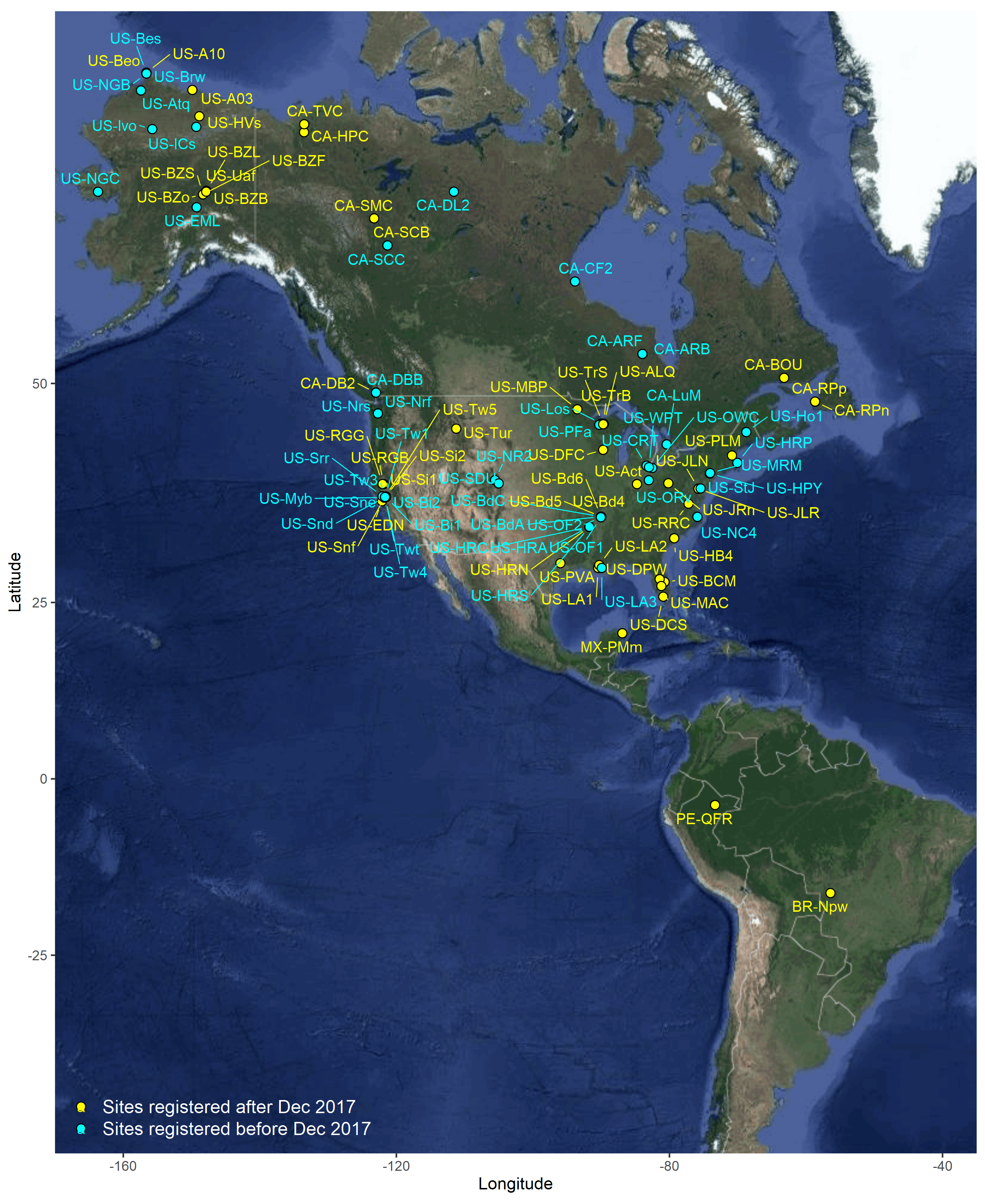AmeriFlux’s Year of Methane (Fall 2018–2020—COVID extended the time) is coming to a close as the next theme, Year of Water Fluxes, moves to center stage. The Year of Methane has been a success, drawing attention to methane flux science, promoting the need for new sites in more diverse geographic locations and ecosystems, building support to improve data collection, and drawing together partners to build a robust community of methane researchers.
Ecosystem methane fluxes present many unknowns and science challenges. Although methane (CH4) is short-lived in the atmosphere (~12 years) compared to carbon dioxide, it is 25 times as potent a greenhouse gas as carbon dioxide (100 year global warming potential). Evaluating the role of ecosystems as sources and sinks of methane as part of the global greenhouse gas budget requires more data from more diverse locations, and data sets with expanded set of measurements. Land methane fluxes are poorly represented in Earth system models.
The time for a Theme Year of Methane Fluxes was ripe—several community efforts around methane were starting up around the same time. Many of the achievements listed below were reached in partnership with these groups. Another important factor for the timing of this Theme Year for Network Action was the widespread availability of commercial sensors.

As of March 2021, 101 AmeriFlux sites have collected or are collecting methane flux data. Sites labeled in yellow were registered to the network after we launched the Theme Year of Methane.
Rewards of this focus on methane include:
- First release of the first global dataset of eddy covariance (EC) measurements of CH4 flux, FLUXNET-CH4 1.0 (cf. Delwiche et al. 2021 preprint, DOI: 10.5194/essd-2020-307 ). These standardized, processed (partitioned and gap-filled) data came from 79 sites globally: 42 freshwater wetlands, 6 brackish and saline wetlands, 7 formerly drained ecosystems, 7 rice paddy sites, 2 lakes, and 15 uplands. For data downloads, start at FLUXNET here.
- Tripled the number of registered AmeriFlux sites measuring methane, representing freshwater and brackish/saline wetlands, rice paddies, lakes, and some uplands; now there are more than 100 sites measuring methane.
- 46 AmeriFlux sites have methane flux (FCH4) in the BASE data product; to find and download data, use our new site search tool.
- AMP’s new loaner program of three LICOR LI-7700 methane sensors provided sensors to six sites in 2018-2020. These were used for short-term research on methane fluxes and: coastal wetlands on the oceanic end of the salinity gradient (US-PLM and US-PHM); coastal wetland restoration on carbon fluxes and storage (US-HRP); irrigation practices on carbon fluxes in rice fields (US-HRN); and to capture the spring release of greenhouse gases from melting bog lakes (US-TrB and US-Trs).
- Concerted effort by AMP to help site teams overcome technical challenges in measuring ecosystem methane fluxes, from setting up new sites to calibrating equipment to offering CH4 calibration gases, and expanding the types of measurements in BASE (e.g., water table depth and temperature).
- Eleven Year-of-Methane blog entries were posted.
- Several workshops with collaborators Permafrost Carbon Network, USGS Powell Center, Coastal Carbon Research Coordination Network, as well as methane-specific breakout sessions at 2018, 2019, and 2020 AmeriFlux Annual Workshops, and the 2018 AmeriFlux Decadal Synthesis Workshop.
What’s next?
The active methane flux community is continuing to make strides in many areas (see list of partners below). Further workshops are planned, and there are ongoing assessments and syntheses of fluxes in the Arctic and other regions. AMP is partnering to develop the data-file protocols for CH4 chamber-flux data.
AmeriFlux Partners in the Year of Methane
Coastal Carbon Research Coordination Network (CCRCN), Global Carbon Project, FLUXNET, ICOS RINGO, Permafrost Carbon Network and several regional flux networks. Funding to support these efforts came from the U.S. Department of Energy, the Gordon and Betty Moore Foundation, and the USGS Powell Center.




No Comments
Be the first to start a conversation